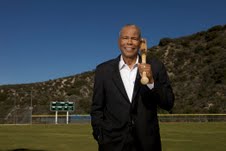If any single idea dominates my overall approach to hitting it is my undying belief in the advantages of flat-hand hitting. Here’s why…
It increases your flexibility to react to a variety of pitches.
It gives you more leverage to drive the baseball.
It provides you better arm extension.
It allows you the ability to get the ball and bat on the same plane.
It makes for a later and more natural rolling of the wrists.
And, it gives you the ability to wait longer on any pitch.
Indeed, the advantages to flat-hand hitting are plenty.
Flat-hand hitting is a concept directly opposed to the often-taught method of top-hand hitting, or rolling your wrists as the ball and bat come together. Fundamentally, rather than having the fingertips of your top hand pointed upward – as they would if your hands were flat – your top-hand thumb is down, your fingertips either facing down or pointed at the pitcher. But, as you will learn – and this is important – flat-hand hitting does not mean the bat will never leave a horizontal plane. On the contrary, the angle of your bat will adjust to the location of the pitch. The location of the pitch, in turn, dictates when the hands are released.
Your back elbow is also crucial to flat-hand hitting. It acts as the ignition to your swing, flattening out your hands automatically as it presses down into your side.
 Try it as you read this. Stand up with an imaginary bat or with a real one while facing the GAPHitter. Get your bat in the 11-o’clock position. Now pull down with your back elbow – left if you’re left-handed, your right if you’re right-handed. The fingertips on your top hand should begin to point skyward, the bat moving, as you swing, horizontally.
Try it as you read this. Stand up with an imaginary bat or with a real one while facing the GAPHitter. Get your bat in the 11-o’clock position. Now pull down with your back elbow – left if you’re left-handed, your right if you’re right-handed. The fingertips on your top hand should begin to point skyward, the bat moving, as you swing, horizontally.
It’s important to remember that, to be dangerous at the plate, you have to have both hands working for you. The bottom hand, in this sequence, works with the back elbow to pull your hands through the strike zone. The role of the top hand is usually to “quicken” the stroke, helping the bat head to get the proper angle to the baseball. The back wrist in this flat-handed position remains cocked and ready. Keeping your back wrist cocked forces your hands farther in front of the bat head, and every pitch except an inside offering, you want your hands to lead the swing. Now, you’re in a phenomenal hitting position – you have your back elbow in, your hands flat, wrists cocked, head stationary, weight shifted and your arms beginning to extend.
As for what’s next, well that all depends on the pitch…











